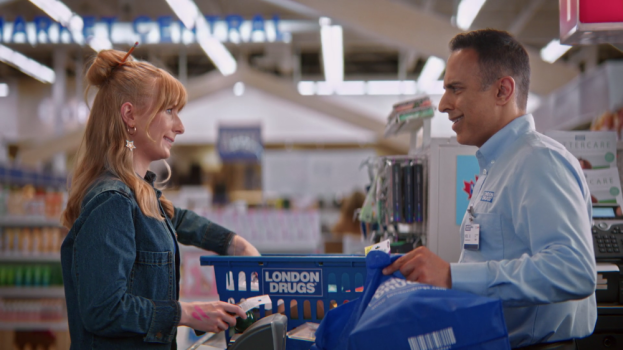By Jason Dubroy
Like anything, it really depends on interpretation. After two quarterly GDP declines in 2015, Canada’s economy eked out an expansion of 1.2% for the year. Heading into 2016, forecasters from a Bloomberg survey called for 1.8% growth this year, marking only the third time in our country’s history that we will record back-to-back years of less than 2% growth since the end of the Second World War.
Yikes.
More importantly, does it feel like a recession? That’s maybe the more important question these days. How shoppers of all segments feel about their situation is the emotional driver for how they act, and how they act – and what can be done to provide value while maintaining the integrity of growth – is the key to recessionary shopper marketing.
First, the facts. Last year, CIBC predicted (correctly as it turned out) that the dollar would fall below 70 cents in the first few months of 2016; at the time of writing this, it’s at 69 cents (Ed. note: the Canadian dollar has since risen slightly, closing at 0.72 USD yesterday). Obviously this decreases Canadian spending power and hurts our importing sectors, which has a direct correlation on how people shop. Sadly, Bloomberg predicts that if Canadian commodities can’t get out of their tailspin, the loonie will fall to the historic low of $61.75, experienced coincidentally on this same week 14 years ago. All of this needs to be taken into consideration when calculating how much people have – or don’t have – to spend on stuff.
This brings up the question of consumer debt. Canadians have debt-to-household-income ratios hovering around 164%. This is now officially the highest of any country in the industrialized world! And, apparently, if you remove pension payouts from the calculation, that number rises to 171%, with a rosy prediction from the Prime Minister’s Office that it could rise to 174% by the end of this year. While we are a country socially OK with debt as a part of day-to-day life, it invariably affects our collective shopping habits, especially on essentials like food.
Therein lies the rub (and not the delicious kind you put on ribs): food prices are now affecting the many instead of the few, increasing in some cases more than five times the rate of inflation. Climate change, supply chain anomalies, tariffs and currency devaluation all form a perfect inflationary storm playing out in almost every food sector: Canada imports a substantial amount of fruits and vegetables, making them particularly susceptible to fluctuations in the dollar; they were up almost 10% last year alone. The Food Institute at the University of Guelph has tabulated some shocking increases on meat prices too. They have risen more than 17% in the past two years, with estimates for 2016 showing an increase of 6% or more, with beef now becoming a luxury rather than a staple item for a sector of shoppers for the first time in their lives.
So, what might all this mean going forward?
The 2007-2008 recession in some (many?) ways redefined the popular notions of “price,” “value” and “worth.” In the seven years since, we have witnessed massive growth at the discount, dollar and club retail channels. In 2014, Nielsen Canada reported that $6 billion had shifted to discount grocery from conventional, with a projection that by 2017, half of all grocery sales would be sold at discount stores. We’ve seen consistent annual increases on TPR activity, to the point that right now close to 40% of all groceries are bought with a price cut or temporary discount. (In 2007, that number was only 27%.)
We have seen the rise of the “frugalista” blogger, who has educated the masses in showcasing grassroots flyer-matching, coupon-stacking tricks and ways to game loyalty points systems. What seems to have happened during that period is that short-term coping behaviours migrated into habit, and when the recovery came, many shoppers had shifted gears permanently into a “new normal.”
If the old adage “failure to plan is planning to fail” still holds true, I leave you with three things to consider to help prepare for something that none of us hope will ever happen in the future.
Elasticity
Everyone should be doing pricing elasticity testing on their businesses. Like, right now. With such volatility in both the economy and the retail marketplace, trade marketers should immediately know how much and how little promotional pricing is necessary to sustain sales volumes while maintaining appropriate margins, and brand marketers should be able to do the same calculations for advertising and media spend. The best shopper marketing will be about being able to define and protect the correlation between both, and help provide contingency planning and promotions if or when needed.
Content
Surprisingly, even though in 2007-2008 shoppers were staying in more and watching more television, Nielsen found that value-message and recession themed ads didn’t break through TV ad clutter at higher rates than ordinary ads. And the media landscape is totally different than it was back then. YouTube had only been sold to Google the year before the start of the recession, the same year Facebook granted public access to its site. Brands and agencies should be doing some proactive behavioural research now on what matters most to people in a downturn, as content that was not developed or widely available “on demand” back then would play a huge role now. In a recession, what exactly would your product provide? And how would your messaging break through?
Remember the long game
People are emotional, and emotions breed irrational behaviour. And while cutting your advertising spend during a recession could hardly be considered irrational in the classical sense, remember: for those that cut deeply into advertising and communications budgets in a down period, the cost to regain their share of voice in the market once the market turned around was around four to five times as much. Many people have forgotten the much publicized study in 2009 that showed how U.S. personal-care category marketers cut spending more than the industry average, and lost share to private labels that they were not able to make back up. Many people would prefer to forget 2007-2008, but those same people would be wise to visit their share-of-market and share-of-voice scores post-2008, and work with their media agencies to game-plan some scenarios for the back pocket.
 Jason Dubroy is managing director at TracyLocke Canada.
Jason Dubroy is managing director at TracyLocke Canada.
Feature image via KMR Photography on Flickr
























